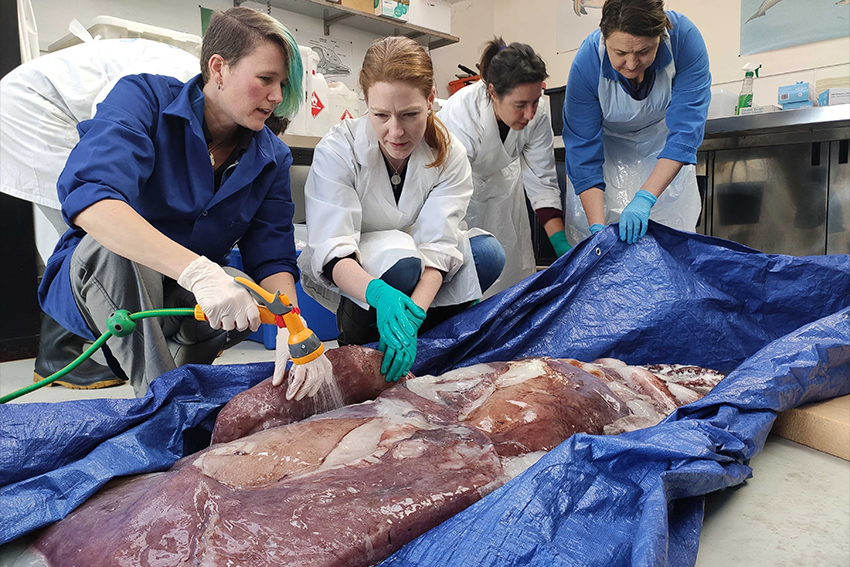Scientists dissect squid named by alum

AUT cephalopod expert Associate Professor Kat Bolstad had her hands full of squid when she dissected a rare specimen caught off Whakaari (White Island) this week.
Dr Bolstad was part of the Auckland War Memorial Museum's Natural Sciences team which dissected the 1.6 metre long Taningia or octopus squid at Massey University's Albany campus.
"This was a fantastic opportunity to examine a large, poorly-known deep-sea squid. Animals in this genus (Taningia) have some exciting physical features including about 200 cat-like claws on the arms, and the largest known light organs in the animal kingdom," she says.
"In fact, this species was only described and named last year by AUT alum Dr Jesse Kelly as part of his PhD thesis, a global revision of the squid family that this animal belongs in."
Dr Kelly says he named the species for the fringe (fimbria) of lanceolate projections along the funnel aperture. "This is one of the diagnostic physical features of this species. "
The specimen was a mature female, and is the largest Taningia fimbria on record. Samples from this specimen will support a wide variety of projects providing insight into the biology of the animal and the workings of New Zealand Aotearoa's marine ecosystems.
The already dead 100kg animal, which was carrying eggs, was collected by a fishing boat in waters, approximately one kilometre deep, off Whakaari (White Island). It was donated to Auckland Museum by Professor Chris Battershill of University of Waikato, for scientific research. The Waikato team are interested in biopsy samples to examine ecotoxicity of the waters around Whakaari after last year's eruption.
Dr Bolstad says, "Collating this type of data helps to inform improvements in our interactions with these species and is invaluable to understanding their ecology."